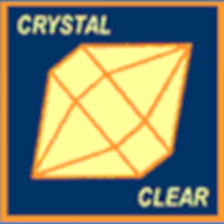Scintillating materials are widely used in many applications where ionizing radiation detection is needed. The requirements in terms of performances depend on the way they are used. A significant number of parameters are generally checked: scintillation yield, decay time, density and effective atomic number, chemical and mechanical stability, radiation hardness, index of refraction, industrial capability to produce large quantities, etc. Another parameter is the shape, thus scintillators may be used as single crystals (high energy physics, medical imaging…), as powders (X-ray phosphors), needles, organic or inorganic fibres and even as liquids.The scintillation process is rather complex. A rough but well admitted description allows the scintillation efficiency (η) to depend on three terms:
η=βSQ
where β is the conversion efficiency from an absorbed high energy photon into a given number of relaxed electrons and holes, S is the energy transfer efficiency from relaxed electron-hole pairs towards the emitting centre and Q is the luminescence yield. Nevertheless, this is not an accurate description since it predicts that the amount of light production should be linear with the energy of the photon interacting with the scintillating material. However, several scientific reports in the 90's showed non linearity when materials are excited by either electrons or γ-rays at various energies.
In addition to the energetic description of the relaxation process leading to light production (η=βSQ), the spatial distribution of the secondary excited species (electrons, holes, excitons) has to be taken into account since high concentrated excitation clusters may lead to quenching interactions and other complicated processes. In addition to the fundamental aspects, these effects are of primary importance since they are correlated to energy resolution of the scintillators, which in most cases is worse than the statistics would have predicted.
An additional difficulty concerns the reproducibility of studied materials. The control of the material preparation is one of the key aspects of this field since a given composition is an ideal formula with a perfect crystalline structure which is never the case in the real world: impurities, crystalline defects such as vacancies are always existing and may have important effects induced by electrons or hole traps or absorbing centres. From a theoretical point of view, most of the models used are Monte Carlo based and combine ballistic description of excited charges and solid state description of the media (density of electronic and phonon states, collective phenomena, etc.).
From a theoretical point of view, most of the models used are Monte Carlo based and combine ballistic description of excited charges and solid state description of the media (density of electronic and phonon states, collective phenomena…).
From an experimental point of view, this field can be split into two aspects:
- Extracting the most accurate scintillating yield, energy resolution as well as its timing performance. This aspect is close to the practical use, but gives little information on the details of the processes.
- Studying by means of dedicated spectroscopy the optical response of crystals. It allows exciting dedicated states using VIS, UV, VUV and soft X-rays photons. The carrier concentration aspect is simulated through high density excitation with femtosecond devices. Each step of the energy relaxation is therefore analyzed but extraction of a scintillating yield in practice is not straightforward.
We invite the reader to consult the proceedings of the SCINT conference series to obtain a full overview of the field.
![]()
